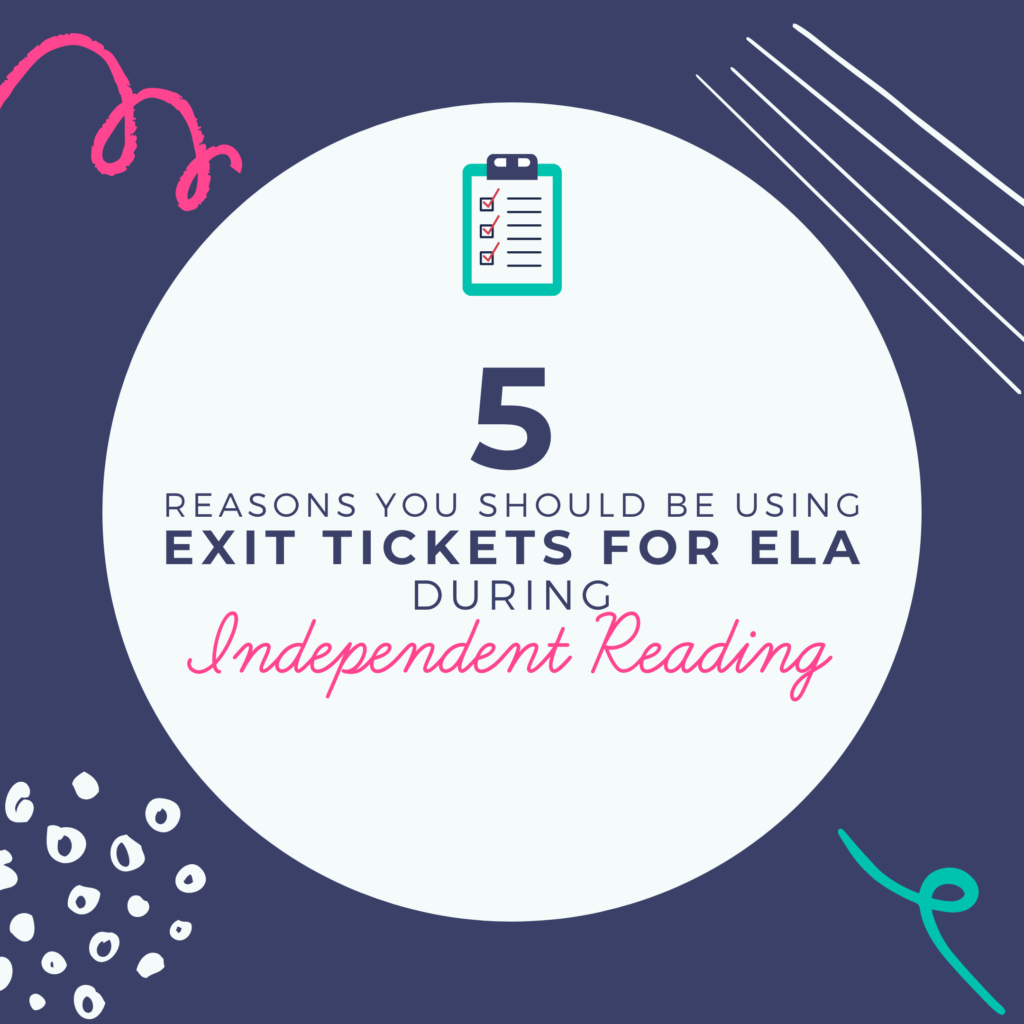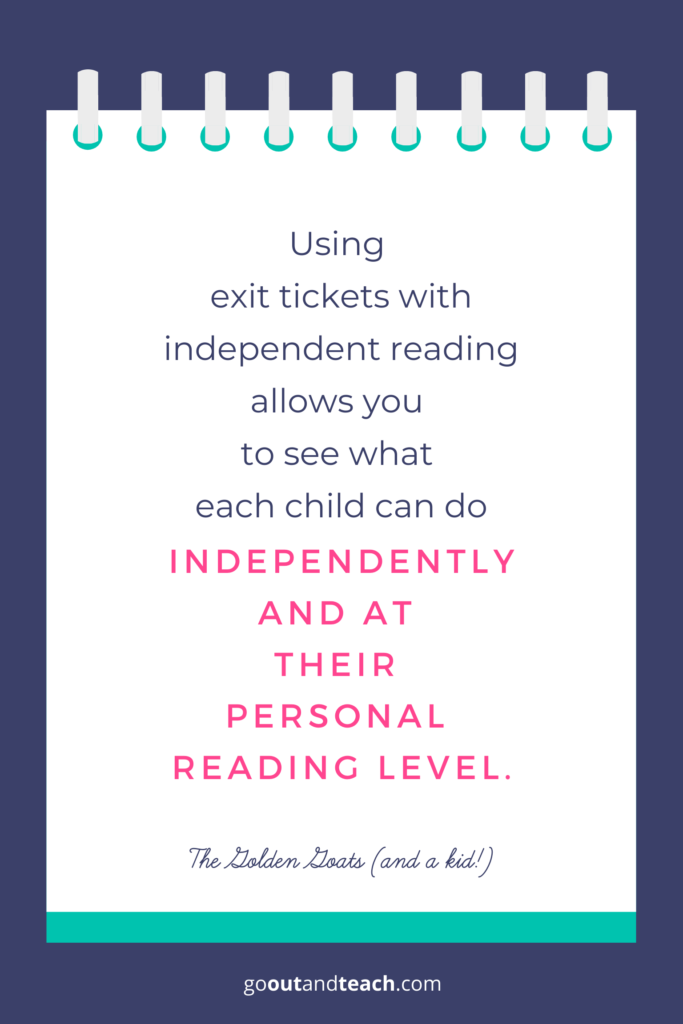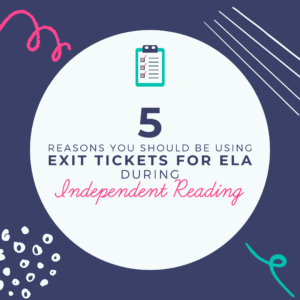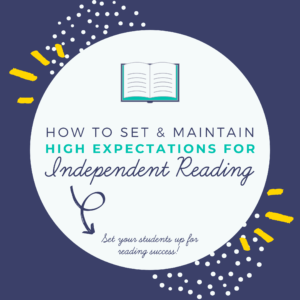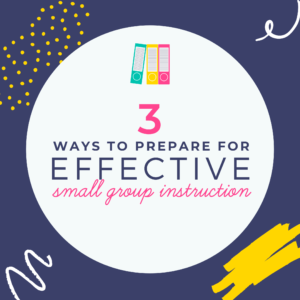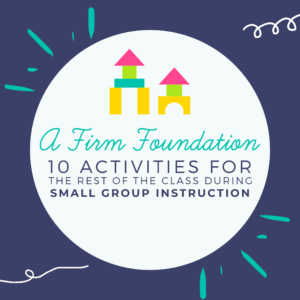Exit tickets for ELA are one of the easiest ways to incorporate formative assessments into your regular classroom routine!
You just taught an amazing series of mini lessons! Then, as you review your students’ work, you realize they did not get it. Has this happened to you? It has certainly happened to me, and it’s extremely frustrating! We all know that formative assessments given at regular intervals are one of the main ways to avoid this, but I think we tend to overthink and over complicate formative assessments. When we overthink formative assessments, we tend to give them too infrequently. I don’t know about you, but I have definitely been guilty of this in the past! Exit tickets for ELA are one of the easiest solutions- especially when you pair it with something you’re already doing- independent reading!
Using exit tickets during independent reading allows for endless customization and differentiation!
The first reason you should be using exit tickets is because they are customizable! Just like any formative assessment, exit slips, or exit tickets, can come in a variety of different shapes and sizes. Post-it notes, quick write journal entry, pre-planned printables. All of these can be used as exit tickets for ELA! The main idea is that the student must complete the task in order to exit the room, or exit the lesson if you will.
Of course, an exit ticket wouldn’t technically have to be given at the conclusion of the lesson; you could have them completed at the beginning of a lesson to assess retention of the learning target from the previous day’s lesson. That’s part of the beauty of the exit ticket! You get to decide what it looks like for you and your students and your lessons! Just remember, exit tickets should be given either the day the lesson was taught or the very next day.
When it comes to ELA, I love to use independent reading as an opportunity for formative assessment. The act of reading independently for sustained periods of time is an important skill in and of itself, but when you add a formative assessment to the end of the reading period, it’s even better! It’s a two for one special!
Because of the customizable nature of exit tickets, you can create a prompt for any standard you’re working on in whole group. To make it even better, using exit tickets for ELA in conjunction with independent reading gives you automatic differentiation. Each student should be reading a book that is at or near their own independent reading level. This allows you to see what each student can do independently with a book that is at their level.
Exit tickets allow you to collect artifacts to document students’ learning!
The proof is in the pudding; or in this case, the proof is in the exit ticket! Exit tickets provide proof as to what your students have learned, or retained, in any given lesson. We use Standards Based Grading in our classrooms, so we are always looking for ways to collect artifacts to document our students’ learning. Not only do exit tickets provide me, the teacher, with proof of whether or not my students have understood what I’ve taught, they also provide my students, as learners, with proof as to how well they have understood the content.
In addition to having your students complete an exit ticket, you can ask them to tell you how well they think they’ve understood the lesson using a 1-3 scale. When I do this, I ask my students to also give me a brief explanation as to why they’ve rated themselves the way the have. This encourages your students to really think through how well they think they’ve understood the content, and it gives you more insight as to where they’re at as well. Hello metacognition! You could also simply have your students do fist to three on their hands. Of course, if you have a different set of numbers for levels of understanding, you can use those!
When you return the exit tickets to your students with feedback, they can see how well their assessment of themselves aligned with their performance. For your students, this can sometimes give them a wake up call that they may not be as in tune with their understanding as they thought they were. Or, it could also confirm that they are headed in the right direction! For you, it gives you a clear idea of where each student is in their mastery of the skill.
Exit tickets are quick!
I don’t know about you, but I like to make the absolute most of each minute in my lessons with my students. Time is a precious commodity in the classroom, or at least it is in mine! I have to imagine I’m not alone in this! Exit tickets for ELA are so quick to give. For example, I always set a reading purpose before my students begin their independent reading. This gives them something to be thinking about as they read. I typically tie the the reading purpose to the target skill we’re working on as a class. Other times, I might set a reading purpose that reviews a previously taught skill. And still other times, I simply tell students to enjoy their book as they read. I always leave the reading purpose displayed on the SmartBoard during the duration of the reading period.
At the end of the reading period, I will give students an exit ticket. For me, this is in the form of a quick write. Students take a few moments to answer a prompt that aligns with the reading purpose.
I also like to make sure I take a few moments after I’ve returned the exit tickets to the students to go over it as a class. I like to share with students the observations I made as I assessed the exit tickets. Where is the class doing well, where is there still work to be done, etc? I also like to give a few specific examples of exemplary work as well as common struggles. Students don’t always know what they don’t know, and it is our job to help them see this. Remember, exit tickets (and all other forms of formative assessments!) are not just for you as the teacher! Exit tickets are equally as important to the student!
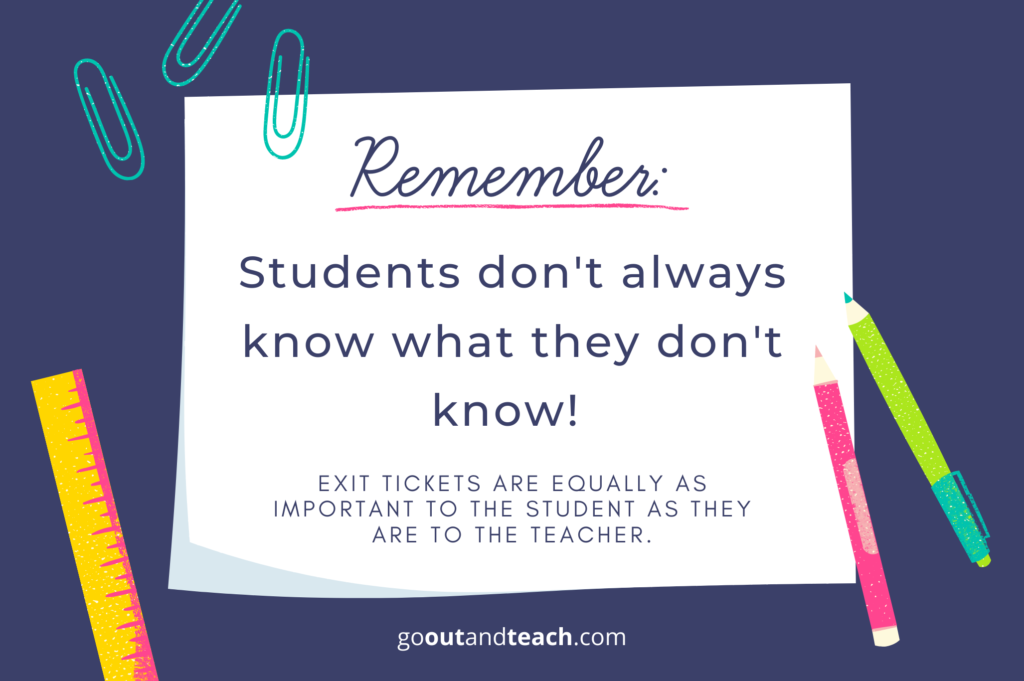
Exit tickets are easy to assess!
You remember that really well-meaning assignment you gave your students as a formative assessment? The one you planned on using to see where they were at before the summative assessment? That’s right, the unnecessarily long one you put in your bulging teacher bag to take home and grade after dinner. And yes, it’s the same one you embarrassingly found three weeks after the summative assessment when you had to clean out that teacher bag. Yep. That’s the one. Maybe this hasn’t ever happened to you, but it did happen to me, and it definitely didn’t need to. Exit tickets are the exact opposite of that assignment.
Exit tickets for ELA are so incredibly easy and quick to grade! Yes, you read that correctly, quick and easy used to describe grading! That’s a teacher’s dream, right? Once the exit tickets have been turned in, I typically try to grade them as soon as I can. Maybe while the kids are at specials, or after they’ve started on some independent work, or even right after they leave at the end of the day. You really only need a minute or two!
As I review the students’ work, I place them into one of three piles. Students who exhibited complete understanding of the concept (mastery). Students who had small errors or partial understanding (emerging). And the final group consisted of students who had little to no understanding of the skill (beginning). After I have them separated, I can quickly and easily mark each exit ticket in the stacks with a 3, 2, or 1 to indicate students’ mastery, emerging, or beginning skill level. Then I simply clip them together and leave them out ready to pass back at the beginning of the next day’s lesson for review. I have also done this using reader’s response notebooks or post-it notes, and the process still works the same way!
Using exit tickets with independent reading is powerful!
Finally, you need to be using exit tickets because they are so powerful! You wouldn’t get in your car and drive if you weren’t seeing clearly; at least I really hope not. How you lay out your instruction in the classroom should be the same. You need to be able to clearly see what your students know and don’t know in order to effectively drive your instruction. Exit tickets. That is the job of an exit slip- to drive your instruction.
What your students can do in whole group with a common text or in small group with guidance, is often different than what they can do on their own in a book of their choice at their reading level. But, you will never know if you don’t give them the opportunity to apply what they are learning in whole group/small group in a completely independent setting.
After I’ve assessed and divided the students’ exit tickets into three different piles, I know exactly where my students are. The students who mastered the skill are good to go; they could benefit from being allowed to help the “emerging” students. The “beginning” students are the ones that I would want to meet with either individually or in a small group setting.
After reviewing the exit slips each day, I have a clear understanding where my students are and how to proceed the next day. When you know exactly where each student is, you gain so much time back because you know when you’re good to move on or when it’s necessary to practice a concept a little more as a whole group before moving on further. It isn’t a guessing game anymore; you have clear evidence, and that is a powerful tool.
So, in a nutshell…
- Exit tickets are customizable.
- You can design them anyway you want/need to in order to fit your lesson and your students.
- Exit tickets are proof.
- They give you cold hard facts in regard to where your students are in their learning of any given skill or concept.
- Exit tickets are quick.
- Exit slips should not take much time to distribute, complete, and collect.
- Take just a couple minutes to review the exit slip with your kids the next day.
- Exit tickets are easy.
- Exit slips are easy to grade. Break them into three categories.
- Got it!
- Kind of get it
- Don’t understand at all
- Exit slips are easy to grade. Break them into three categories.
- Exit tickets are powerful.
- Exit slips will drive your instruction in a clear and efficient way.
Looking for Ready Made Exit Tickets for ELA? Check out the following!
- 3rd Grade Reading Literature CCSS Exit Tickets (coming soon!)
- 4th Grade Reading Literature CCSS Exit Tickets
- 5th Grade Reading Literature CCSS Exit Tickets (coming soon!)


